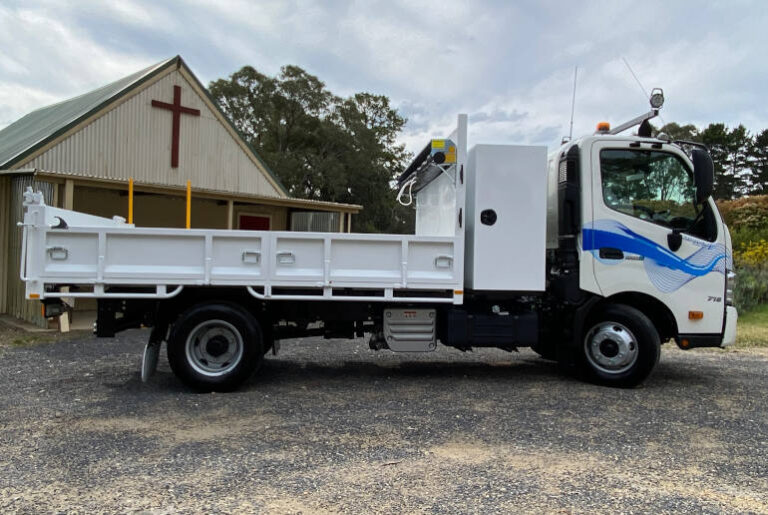The Australian body-building sector has faced several issues since the pandemic, including labour shortages, supply chain disruptions, and price surges. Despite some recovery, the industry still faces constraints that hinder its ability to scale up operations. The estimated number of body-building slots available each year is 22,000 for approximately 34,000 new trucks. This bottleneck means that many trucks sit idle, waiting for bodies before they can enter service.
Challenges for Fleet Managers
Fleet managers looking to enhance operational efficiency by quickly deploying new trucks are finding the wait times frustrating. Larger fleets with long-term planning capabilities tend to fare better, as they can secure body-building slots well in advance. Smaller operators and councils, however, may not have the resources or foresight to lock in these opportunities, putting them at a disadvantage in the competitive delivery landscape.
The current situation has also introduced a dynamic where fleet managers are increasingly vying for body-building slots with small- and medium-sized enterprises that lack the capital to scale up production or offer mass-produced bodies at a lower cost. Consequently, manufacturers such as Hino Australia are stepping in to reshape how trucks are produced and delivered, with a particular emphasis on integrating body-building solutions into the production line itself.
The shift towards generic body types
In response to the delays, manufacturers are expanding their catalogues of generic body types. Hino, for example, has designed a Built to Go range of standardised bodies, including aluminium trays, steel trays, tippers, and even recovery bodies. This shift allows fleet managers to opt for pre-built solutions rather than waiting for a custom build. While these bodies may not perfectly align with specific fleet requirements, they do offer a faster and more affordable way to get vehicles on the road.
For many fleet managers, this shift requires a mindset adjustment. Custom body specifications have been the norm, tailored to the unique operational needs of a business. However, relying on custom builds can mean waiting months or even years for a truck to be fully fitted. Adopting generic body types, much like utilising off-the-shelf software solutions, may be a more practical choice when speed is paramount.
Advantages of embracing standardised body types
Adapting to generic body types presents several benefits that align with the growing demand for faster service deployment:
- Reduced wait times: Generic bodies can be produced and delivered more swiftly, allowing for quicker vehicle deployment.
- Lower costs: Standardised bodies are often more affordable, as manufacturers can produce them in bulk, reducing per-unit costs.
- Simplified maintenance: Standard bodies can ease maintenance processes by streamlining part replacements and service procedures, as mechanics become more familiar with these uniform models.
These benefits, however, do require fleet managers to strike a balance between immediate functional needs and the potential for reduced flexibility.
Long-term strategic implications
The long-term implications of this shift are significant. As manufacturers increase their capacity to deliver trucks with pre-fitted, standardised bodies, fleet managers may find that aligning with these options becomes a necessity rather than a choice. The anticipated increase in the availability of imported, standardised truck bodies may eventually relieve some pressure on local supply chain and allow the sales of new trucks to break more records.
Without further investment or consolidation, the local body-building industry may experience a marked transformation, with offshore manufacturing becoming increasingly integrated into the local fleet industry.
For fleet managers, there a number of strategies to consider:
- Opt for standardised bodies when possible: Choosing from a manufacturer’s range of pre-designed body types can significantly reduce delivery times. While this may require some flexibility in operational specifications, the benefits in reduced downtime often outweigh the limitations.
- Plan purchases well in advance: Long-term planning and securing body-building slots as early as possible is essential. For larger fleets, maintaining a 10-year replacement plan can help ensure a steady supply of vehicles despite industry-wide delays.
- Engage with manufacturers on emerging body solutions: Stay informed about the evolving product lines from manufacturers. As companies like Hino expand their standard body offerings, new options may become available that better align with specific fleet needs without requiring custom builds.
- Evaluate factory options for specialised builds: If custom bodies are necessary, consider engaging with truck manufacturers who have offshore production capabilities. This approach may offer a compromise between standardisation and customisation, leveraging the efficiency of overseas facilities to create bespoke solutions with less wait time.
- Align specifications with available bodies: Fleet managers should explore the possibility of modifying operational requirements to fit existing body designs, similar to selecting off-the-shelf IT solutions. By making slight adjustments to what’s needed in the field, fleets can access ready-made bodies without waiting for a custom build.
As the demand for new trucks continues to rise, the limitations of Australia’s body-building sector are becoming more pronounced. For fleet managers, the message is clear: embracing flexibility in specifications and looking towards generic or standardised body types may be the key to faster deployment and reduced delays. By working closely with manufacturers and planning strategically, fleet managers can continue to drive efficiency without being bogged down by the current constraints of the local market.
The shift to generic bodies may not solve every operational need, but it provides a viable path forward as the industry adapts to meet demand. In an era where delivery speed is paramount, aligning with manufacturers to implement ready-made solutions could be the difference that keeps a fleet competitive in a challenging market.






